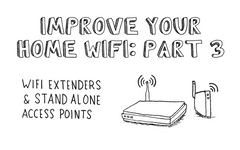Payment methods accepted

Selecting the Correct RJ45 Connector
Written by Don Schultz, trueCABLE Senior Technical Advisor, Fluke Networks Copper/Fiber CCTT, BICSI INST1, INSTC, INSTF Certified
All Ethernet cable must be terminated. One way is to use a RJ45 Ethernet connector. For some great background on the most effective terminations to use during your installation (and why) see Choosing the Right Termination - Keystone Jack vs RJ45 Connector vs Field Termination Plug. As it turns out, RJ45 8P8C connectors are not the best choice for solid copper Ethernet cable, although there are situations where using them is not avoidable. Given that you may need to use this style of termination due to installation constraints, it behooves you to fully understand how to pick the right one!
 The correct terminology is 8P8C (eight position, eight contact) modular plug. Often 8P8C plugs are referred to as “RJ45” and we will continue to use that term for simplicity.
The correct terminology is 8P8C (eight position, eight contact) modular plug. Often 8P8C plugs are referred to as “RJ45” and we will continue to use that term for simplicity.Are RJ45 connectors all the same? Definitely not! Selecting the correct 8P8C (aka RJ45) connector for your Ethernet data cable is entirely dependent upon the type and construction of the cable to be run. Technically, Category has nothing to do with it. It is all about fitment. The selection revolves around RJ45 connector size (on the inside). Information is half the battle in the quest for success, and this can be a bit tricky. Let’s get fitted!
I am including a video with this blog to provide some hands-on examples in addition to the written portion. Both bring something to the table, and the video should be watched in conjunction with reading.
Do I need a shielded connector?
This is an easy one. If the cable is shielded, you will want to use shielded RJ45 connectors. Conversely, if the cable is unshielded, then use unshielded RJ45 connectors. Using a shielded connector on an unshielded cable will yield no benefit, assuming the fitment is correct to begin with (and likely it won’t be). Shielded connectors are typically “up size” in nature, and usually won’t make proper electrical connections with thinner unshielded Ethernet cable conductors. Another item of note is using shielded RJ45 connectors on unshielded Ethernet cable is bad form as it may mislead someone into thinking the cable is also shielded.
When it comes to unshielded connectors on shielded cable, don’t do it. Shielded cables need shielded connectors for the cable shield to function properly (the outside of the metal connector functions as an extension of the cable shield and is used to bond to ground).

Once you have decided on whether the RJ45 connector (also referred to as a plug) should be shielded or not, the next thing is…
Research for the right cable & plug
Any reputable manufacturer will have detailed specifications and publish them. Avoid any manufacturer that does not publish all of the required details as you will be playing a guessing game from the start. They are likely not a manufacturer, but simply a reseller that will offer little to no support for their products.
Do not shop by Category for the best RJ45 connector, as this can be misleading when mixing components from different vendors! “Category” stated on any bag of RJ45 plugs can be misleading when it comes to proper fitment, period. There is little, if any, correlation between the two. Are you, the consumer, being lied to? Not precisely. When a manufacturer (that only makes plugs and not the cable, for example) states a category on their plug it’s because they assume the consumer is not technically savvy enough to choose based upon technical data. This is not only a bit insulting, it is confusing. A properly documented and advertised plug would be listed as “Unshielded RJ45 Plug, 3 prong for solid copper Ethernet cable, fits up to 7.00mm OD and 0.94 to 1.04mm insulated conductors.” So, what did the “XYZ Manufacturer” do? They advertised their plug as “Cat6”, leaving out all the important stuff, and this leaves you guessing.
trueCABLE is the exception here since we sell a system. We go the extra mile of testing our components together. So, a trueCABLE CatX unshielded RJ45 plug will fit and function on all of our unshielded CatX Ethernet (we will note exceptions as necessary). We also thoroughly document our connecting hardware so you can make an informed choice if you are not using trueCABLE brand Ethernet cable.
So what if you are dealing with brand “X” of one thing and brand “Y” of another?
For the Ethernet cable you will need to know:
- OD (outside diameter) of the Ethernet cable (the overall thickness). This is often expressed in millimeters (mm).
- Conductor insulation diameter (the actual conductor wire plus insulation thickness) and likewise this measurement is often expressed in millimeters
- If the cable has solid or stranded conductors
- Copper AWG gauge
- Cable jacket OD that the plug is capable of accepting
- Conductor insulation diameter range that the plug is capable of accepting
- If the plug is 2 prong or 3 prong. 3 prong plugs will work with stranded and solid copper conductors. 2 prong plugs work with stranded copper only.
- Copper AWG gauge
 Pro tip: Be aware of the potential tolerances (-/+) for the conductor insulation diameter of the Ethernet cable. Try and pick a RJ45 plug where the middle of the plug fitment range matches the stated nominal diameter of the insulated conductors of the cable you intend to use. This will help to account for any manufacturing tolerance differences that can and do occur.
Pro tip: Be aware of the potential tolerances (-/+) for the conductor insulation diameter of the Ethernet cable. Try and pick a RJ45 plug where the middle of the plug fitment range matches the stated nominal diameter of the insulated conductors of the cable you intend to use. This will help to account for any manufacturing tolerance differences that can and do occur.
Cat6 Unshielded Riser Specification Sheet
- The conductor insulation diameter is 0.96mm
- The cable jacket OD (overall cable thickness) is 5.90mm
- The cable is using solid copper conductors and are 23AWG
So, armed with those requirements we would need to choose the trueCABLE Cat6/6A Pass-Through RJ45 connector (if you wish to use pass through).

Cat6/6A Unshielded Pass-Through RJ45 Connector Plug specification sheet
We have a match!
Best Practices
- It is best to keep hand-terminated RJ45 connectors to a minimum
- Never attempt to create an Ethernet patch cable by using hand crimped RJ45 plugs on both ends when using solid copper Ethernet. Buy factory pre-terminated patch cords for this purpose. If in a pinch, use field termination plugs at both ends when seeking to create a patch cable using solid copper bulk Ethernet cable.
- Staggered load bar standard (solid nosed) RJ45 plugs are strongly recommended for Cat6A terminations when RJ45 connectors are necessary. Cat6A, when pushed to 500MHz for 10Gb/s operation, generates quite a bit of cross-talk (NEXT) at the connector. When testing with our Fluke DSX-8000, I can produce a 5.0 dB better NEXT parameter when using our Cat6/6A RJ45 standard connector plugs in comparison to our straight-across pass-through variety. This can mean the difference between operating reliably at 10G or being stuck at 1G. The better option is our Cat6A Field Termination Plug when dealing with high speed connections that need a male end.
- When buying cable and connectors from different vendors, try for the middle! For example, if your Ethernet cable has a stated insulated conductor diameter of 1.00mm, then select a RJ45 plug with an insulated conductor range of 0.95 to 1.05mm. This will give you the best fitment and performance and also allows for tolerance changes from lot to lot (which on Ethernet cable can vary as much as +/- .05mm).
- Cable strain relief boots are strongly recommended to help stabilize the mechanical (and therefore electrical) connection by helping to prevent cable shift at the rear of the RJ45 connector. The weakest link in the system is always the termination. Strain relief boots take additional strain off of the termination contacts, and help remind you of the cable bend radius.
- Buy more connectors than you need. It is wise to test terminate (crimp) the connectors onto the cable to make sure you can work with them. In addition, if you make a bad crimp then you can simply use any extras. Even the most experienced installers make a bad crimp from time to time.
- If you are new to this kind of activity, then practice as much as practical. The more terminations you make, the better you will get.
- If you do make a bad termination, then the connector is trash and cannot be reused
Common Questions & Answers
trueCABLE receives many questions regarding 8P8C (aka RJ45) connectors, but we took time to distill down the most common questions and will answer them here!
What is the alternative to RJ45 connectors?
There are a number of options for terminating Ethernet cable, almost all of them much better than hand terminating RJ45 connectors. It depends on your installation circumstances, but the correct way of terminating a structured cabling system is using IDC (insulation displacement contact) terminations like keystone jacks and/or patch panels at both ends of a solid copper Ethernet cable connection. Patch cords, traditionally speaking, are used to patch your devices into the permanent solid copper cabling (from keystones to computers or patch panel to Ethernet switch for example). As a result of this structured approach, patch cords utilize 8P8C (aka RJ45) connectors at both ends to let you patch your equipment in. Patch cords are packaged already pre-cut to a fixed length. Patch cords should be factory made and tested--preferably certified. There are valid circumstances, however, where you may need to hand terminate a 8P8C modular plug onto a solid copper Ethernet cable such as for a PoE powered device like a Wi-Fi AP or surveillance camera. In such cases, what you are really looking for is a male end connector, but it does not necessarily have to be a 8P8C plug. A superior alternative would be field termination plugs, which use IDC type terminations. Field termination plugs are category rated, easier to work with, provide much better performance, and allow compatibility across a range of cable types. If you can make use of field termination plugs, then that is preferable to 8P8C plugs.
Should I use RJ45 A or B? What is the correct order for RJ45?
These two questions can be answered at the same time. There are two approved color code sequences for copper twisted pair category cable Ethernet LAN use: T568A and T568B. Neither is better than the other. It comes down to personal preference or if you have a stated contractual requirement you are working to (rare in 2024). The main thing to keep in mind is both ends of anything you hand terminate must be to the SAME sequence. Don’t mix them. Factory pre-terminated patch cords can be either “A” or “B” at both ends and used equally, as these are both “straight through” strategies, so don’t worry about that. Please see T568a vs T568b: Which To Use for a lot of cool information on this subject!
Are passthrough RJ45 connectors better? What about RJ45 pass through connectors vs regular?
Again, we can answer these two common questions at the same time. It really depends on what you mean by “better”. Pass-through 8P8C modular plugs are generally easier to work with, but pass-through 8P8C modular plugs are more sensitive to insulated conductor fitment. Many times you have no alternative but to use a pass-through plug, depending upon the selection available. This is a highly nuanced topic that is fully addressed in Terminating Pass-Through RJ45 Connectors onto Solid Copper Ethernet Cable -- A Really Bad Idea?
Do RJ45 couplers degrade signal?
Yes. Keep the use of couplers to an absolute minimum. If possible, don’t use them unless you have no other choice. The issue is not so much the coupler as the number of RJ45 terminations required to use a coupler. Each time you utilize a RJ45 coupler it will require two more RJ45 terminations. There is a highly informative blog article with performance data found in Ethernet Couplers - How Many is Too Many?
Did You Know?
RJ45 connectors come in four primary types:- Standard (solid nose) non-stagger eight across
- Standard (solid nose) load bar staggered (four high, four low)
- Pass-through non-stagger eight across
- Pass-through staggered (four high, four low)
Staggered style plugs were originally designed to accommodate cable with thicker insulated conductors. If lined up eight across, the conductors would exceed the external size of the RJ45 plug and thus need to be staggered. Technically speaking, there is nothing in the ANSI/TIA 568-2.D specification which dictates RJ45 plugs should be staggered for any particular Category, not even Cat8.

Some connectors lack a strain latch and also skip the rectangular cut-out where the strain latch is found. This rectangular notch is found near the open end of the plug. In order to crimp a connector of this type, a crimp and termination tool that has an adjustable strain latch presser bar such as our All-In-One Crimp and Termination Tool is required. If not adjusted out of the way, the presser bar will destroy the rear of your RJ45 plug. This is often found with large shielded connectors that also have an external ground. The external ground tab serves as the strain relief in this case. The external ground tab must be firmly and properly crimped down in order to avoid electrical connection issues! None of the RJ45 connectors that trueCABLE sells require the strain latch presser bar to be disengaged.
So, now you know enough to select the correct RJ45 connector for your next Ethernet project. If you don't, that is okay! Practice makes perfect, so my sincere advice is to dive right in and start putting on connectors. You will likely make mistakes, but that is the best kind of learning. If you need more help on finding the right connector for the job, You can also use our very own Connector Finder that can help you find the perfect connector based on your cable and type of installation.
HAPPY NETWORKING!
trueCABLE presents the information on our website, including the “Cable Academy” blog and live chat support, as a service to our customers and other visitors to our website subject to our website terms and conditions. While the information on this website is about data networking and electrical issues, it is not professional advice and any reliance on such material is at your own risk.


































What is surprising about this video is that you never mentioned the fact that RJ45 JACKS have changed! A typical RJ45 connector WILL NOT FIT in a legacy RJ45 jack! It is quite amazing that online stores are selling all kinds of RJ45 connectors without mentioning you will have to change all your jacks that were installed 10 years ago. And nobody sells RJ45 connectors that fit these legacy jacks except TrueCable. Nobody bothers to put the dimensions of their connectors on their information sheets either. The standard dimensions of a legacy RJ45 connector is 11.60 mm x 7.60 mm which is close to what trueCable sells (11.72 mm x 7.30 mm) while everybody else sells 11.60 mm x 8.60 mm connectors – obvious bigger and very unlikely to fit in a legacy jack.
Hey John,
The specification for fitment between RJ45 jacks and 8P8C plugs is not only standardized but actually prescribed by federal law, and has remained unchanged since it was codified in the 1980s. We can assure you that trueCABLE products always have and always will conform to that singular standard.
8.6 mm is the vertical dimension of a standard 8P8C (RJ45) plug prior to termination. After termination, the electrical contacts have been depressed and it changes to 7.6 mm. It is natural to want to pre-fit parts as a quick check for problems prior to installation. Normally, we encourage this behavior. But in the case of modular plugs, you have to install them first. Otherwise, as you have confirmed, they won’t fit.
How to choose between internal and external ground options in shielded pass-through RJ45 connector?
Hey Kiran,
Often you won’t have the option to choose between the two. Whether the ground is internal or external to the RJ45 often has to do with the cable you select and the required fitment to the RJ45 plug. Internal ground connectors typically are used for thinner shielded Ethernet and external ground connectors are usually restricted to thick shielded Ethernet with thick insulated conductors.